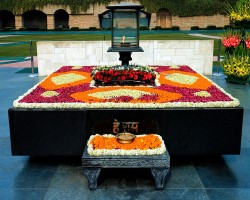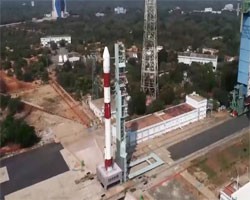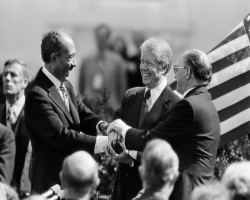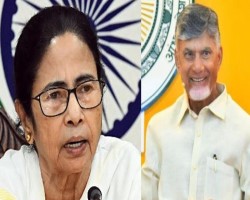Banking Current Affairs
TABLE OF CONTENTS |
||||||||||||||||||||
| History | ||||||||||||||||||||
|---|---|---|---|---|---|---|---|---|---|---|---|---|---|---|---|---|---|---|---|---|
|
|
||||||||||||||||||||
|
Why in News?
The debate over memorials for former leaders reignited following the passing of former Prime Minister Manmohan Singh on December 26, 2024. His cremation at Nigambodh Ghat, rather than a designated memorial, sparked political and public discussions. The Narendra Modi government announced plans to build a memorial to honor Singh, the architect of India’s economic liberalization. Historical Context: Key Highlights on Memorials in India Raj Ghat as the Template: The memorial for Mahatma Gandhi (Raj Ghat) became the model for future leaders' memorials. Located in Delhi near the Yamuna River, it includes a black marble slab marking Gandhi’s cremation site in 1948. Memorials for Prime Ministers: Jawaharlal Nehru: Memorial named Shanti Van in 1964, symbolizing peace. Lal Bahadur Shastri: Memorial named Vijay Ghat in 1966, signifying victory over Pakistan. Indira Gandhi: Memorial named Shakti Sthal in 1984, emphasizing strength. Rajiv Gandhi: Memorial named Veer Bhumi in 1991, symbolizing his assassination. Charan Singh: Memorial named Kisan Ghat in 1987, highlighting his status as a farmer leader. P V Narasimha Rao: Memorial named Gyan Bhumi in 2015, representing his scholarly contributions. Recent Developments: The Rashtriya Smriti Sthal was established in 2015 as a common memorial complex for departed leaders due to limited space in Delhi. This site now houses memorials for leaders like Chandra Shekhar, I K Gujral, and Atal Bihari Vajpayee (Sadaiva Atal). Leaders Without Memorials: Former PM V P Singh (1989-1990), known for implementing the Mandal Commission, remains the only deceased PM without a memorial. Politics Behind Memorials: The location and construction of memorials often reflect the political power at the time of a leader's passing. For instance: Morarji Desai: Memorial built in Gujarat during Congress rule. Narendra Modi Government: Established memorials for P V Narasimha Rao and others, revisiting decisions of previous administrations. Significance of Memorials: Memorials symbolize the legacies of leaders and their contributions. For example: Raj Ghat: Reflects Gandhi’s role in shaping the nation. Shanti Van: Highlights Nehru’s peace-driven leadership. Kisan Ghat: Represents Charan Singh’s advocacy for farmers. Future Plans: A trust will oversee the construction of Manmohan Singh's memorial, possibly near the Sanjay Gandhi Memorial or Shanti Van. The government aims to honor Singh’s economic reforms and leadership with a fitting tribute. Conclusion: The politics, geography, and history of memorials in India underline their role as markers of political legacy and power dynamics. Memorials serve as sites of remembrance and honor for leaders' contributions to the nation's history. 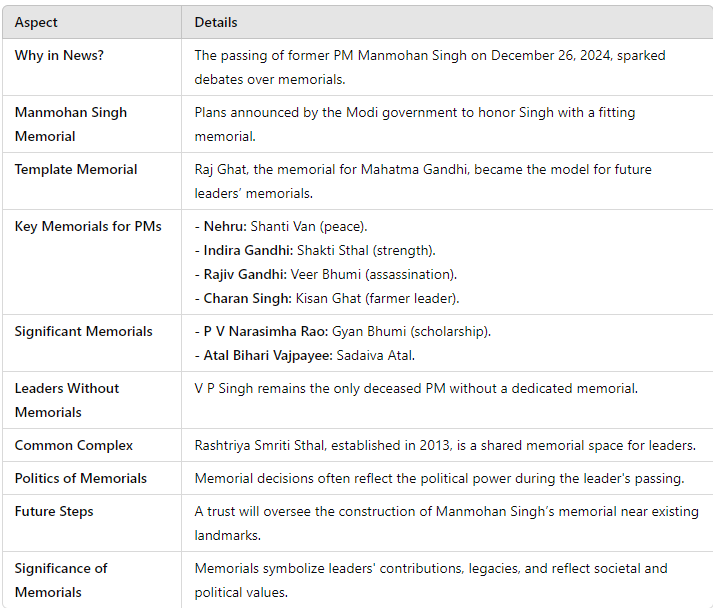
|
||||||||||||||||||||
|
|
||||||||||||||||||||
|
Frequently Asked Questions (FAQs) in Competitive Exams:
1. Which memorial served as the template for other leaders' memorials in India? A. Vijay Ghat B. Raj Ghat C. Shakti Sthal D. Veer Bhumi Answer: B 2. What is the significance of the Kisan Ghat memorial? A. Tribute to Lal Bahadur Shastri’s 1965 victory over Pakistan. B. Representation of Mahatma Gandhi’s role in Indian independence. C. Recognition of Charan Singh’s contributions as a farmer leader. D. Celebration of Indira Gandhi’s strong leadership. Answer: C 3. Which of the following Prime Ministers does not have a memorial in India? A. V P Singh B. P V Narasimha Rao C. Morarji Desai D. I K Gujral Answer: A 4. The memorial Gyan Bhumi is dedicated to which Indian Prime Minister? A. Jawaharlal Nehru B. P V Narasimha Rao C. Lal Bahadur Shastri D. Rajiv Gandhi Answer: B 5. What decision did the Manmohan Singh government take in 2013 regarding memorials? A. Separate memorials for future leaders. B. Establishing a common memorial complex for departed leaders. C. Constructing memorials only outside Delhi. D. Prohibiting the construction of any new memorials. Answer: B 6. Which of the following Prime Ministers' memorials is named Shakti Sthal? A. Indira Gandhi B. Rajiv Gandhi C. Lal Bahadur Shastri D. Atal Bihari Vajpayee Answer: A 7. What is the Rashtriya Smriti Sthal? A. A memorial dedicated to Mahatma Gandhi. B. A memorial for all former Presidents. C. A common complex for departed leaders. D. A space for Prime Ministers only. Answer: C 8. Which Prime Minister's memorial was renamed as Jannayak Sthal by the Modi government in 2015? A. Atal Bihari Vajpayee B. Chandra Shekhar C. V P Singh D. I K Gujral Answer: B 9. What does the Veer Bhumi memorial symbolize? A. The assassination of Rajiv Gandhi. B. Gandhi’s role in forging the Indian nation. C. Nehru’s peace-driven leadership. D. Lal Bahadur Shastri’s military success. Answer: A 10. Why was the Rashtriya Smriti Sthal concept proposed? A. To save land in Delhi from being taken up by individual memorials. B. To consolidate all existing memorials into one location. C. To honor all freedom fighters collectively. D. To allow for future memorials to be built outside Delhi. Answer: A |
||||||||||||||||||||
| Science and Technology | ||||||||||||||||||||
|
|
||||||||||||||||||||
|
Why in News?
The Indian Space Research Organisation (ISRO) launched the SpaDeX (Space Docking Experiment) mission on December 30, 2024, marking a significant step in India's space exploration. The PSLV-C60 rocket successfully placed two satellites into orbit, setting the stage for India’s first in-space docking demonstration. What is Space Docking, and Why is it Important? Space docking involves the connection of two spacecraft in orbit to transfer resources, crew, or components. It is crucial for future space missions requiring: Building and operating modular space stations like the Bharatiya Antariksh Station (BAS). Sample-return missions, such as Chandrayaan-4, where lunar samples will dock with a re-entry module in Earth’s orbit. Human spaceflight and advanced scientific research. Key Highlights of the SpaDeX Mission Satellites and Orbit: Two satellites, SDX01 (Chaser) and SDX02 (Target), were placed in a 475-km circular orbit. These satellites will demonstrate docking and undocking capabilities. Docking Procedure: A 20 km distance between the satellites will be reduced incrementally through precise maneuvers, progressing to a final docking. The satellites will transfer electrical power during docking and later undock to operate independently for two years. Technology Demonstration: The Chaser satellite features a high-resolution camera for visual tracking. The Target satellite carries a multispectral payload for monitoring natural resources and a radiation monitor for space radiation studies. POEM Experiment Module: The fourth stage of the PSLV-C60 launch vehicle will be repurposed as the PS4 Orbital Experiment Module (POEM). Experiments include robotic arms for debris capture, satellite servicing, and biological studies like plant growth and gut bacteria behavior in space. Significance of Space Docking for India: Joining Elite League: With this mission, India could become the fourth country to achieve in-space docking, after Russia (USSR), the US, and China. Building Modular Space Stations: The Bharatiya Antariksh Station (BAS), planned for 2028, will consist of five modules docked in space. Future Missions: Chandrayaan-4 and potential human lunar exploration require docking for transferring samples and payloads. Enhanced Capabilities: Enables ISRO to launch heavier payloads by assembling modules in orbit, reducing launch vehicle constraints. Key Terms PS4 Orbital Experiment Module (POEM): The final stage of the launch vehicle, repurposed for experiments. Multispectral Payload: Captures data across different wavelengths to study Earth’s natural resources. Docking Capability: The ability to connect spacecraft in orbit, critical for modular space construction. Way Forward for ISRO: Leverage the success of SpaDeX for advancing docking technology and ensuring readiness for complex missions like Chandrayaan-4 and BAS. Foster collaboration with global space agencies and private players to enhance capabilities. Invest in next-generation technologies, including autonomous navigation, robotic arms, and in-orbit manufacturing. Quick Revision:
|
||||||||||||||||||||
|
|
||||||||||||||||||||
|
Useful information for all competitive exams:
Indian Space Research Organisation (ISRO): Formed: 15 August 1969 Preceding agency: INCOSPAR (1962–1969) Headquarters: Bengaluru, Karnataka Chairman: S. Somanath (10th Chairman of the Indian Space Research Organisation) Primary spaceports: Satish Dhawan Space Centre, Thumba Equatorial Rocket Launching Station, Kulasekarapattinam Spaceport |
||||||||||||||||||||
|
|
||||||||||||||||||||
|
Frequently Asked Questions (FAQs) in Competitive Exams:
1. Which of the following best describes the primary objective of ISRO's SpaDeX mission? A. Launching communication satellites into geostationary orbit. B. Demonstrating space docking capability. C. Conducting manned space missions. D. Developing a reusable launch vehicle. Answer: B 2. Which of the following countries have achieved space docking technology before India? Russia (USSR) United States China Japan Select the correct answer using the code given below: A. 1 and 2 only B. 1, 2, and 3 only C. 1, 2, 3, and 4 D. 2, 3, and 4 only Answer: B 3. What is the role of the PS4 Orbital Experiment Module (POEM) in the SpaDeX mission? A. To act as a launch vehicle for satellites. B. To demonstrate technologies for debris capture and robotic satellite servicing. C. To monitor Earth's natural resources using a multispectral payload. D. To serve as a command center for the docking maneuver. Answer: B 4. Why is space docking considered crucial for India's future missions? It enables modular construction of space stations like Bharatiya Antariksh Station. It facilitates sample-return missions like Chandrayaan-4. It helps ISRO reduce launch costs by assembling heavy payloads in orbit. Select the correct answer using the code given below: A. 1 only B. 1 and 2 only C. 2 and 3 only D. 1, 2, and 3 Answer: D 5. What is the significance of the Chaser satellite in the SpaDeX mission? A. It serves as the Target satellite for docking. B. It is equipped with a high-resolution camera for visual tracking during docking maneuvers. C. It monitors radiation levels in space. D. It supports plant growth experiments in microgravity. Answer: B 6. What are the names of the two satellites involved in ISRO's SpaDeX mission? A. Chandrayaan-4 and NavIC-02 B. SDX01 (Chaser) and SDX02 (Target) C. RISAT-2B and Cartosat-3 D. GSAT-24 and PSLV-XL Answer: B |
||||||||||||||||||||
| Deaths | ||||||||||||||||||||
|
|
||||||||||||||||||||
|
Why in News?
Former U.S. President Jimmy Carter, who served from 1977 to 1981 and later became a global humanitarian, passed away at the age of 100 on Sunday. He was the longest-living American President and is remembered for his efforts to promote peace, civil rights, and global humanitarian initiatives. Key Highlights of the Report Life and Legacy of Jimmy Carter Presidency: Won the U.S. presidency post-Watergate and Vietnam War. Served one term before losing re-election in 1980. Humanitarian Work: Redefined post-presidency with global efforts, including disease eradication, housing the homeless, and peace-building through the Carter Center. Reactions: U.S. President Joe Biden called him an "extraordinary leader, statesman, and humanitarian." Indian Prime Minister Narendra Modi praised his contributions to global peace and fostering strong India-U.S. relations. Relationship with India India-U.S. Nuclear Deal: Played a significant role in the original "Indo-U.S. nuclear deal" for Tarapur Atomic Power Station. Attempted to nudge India towards signing the Non-Proliferation Treaty (NPT). 1978 Visit to India: Marked a significant milestone in bilateral ties. First U.S. President to visit India without combining it with a visit to Pakistan. Welcomed by Prime Minister Morarji Desai and President Neelam Sanjiva Reddy. Delivered a speech in Parliament drawing parallels between U.S. democracy post-Watergate and India post-Emergency. Notable Events During His Visit Public Reception: Attended a rally at Ramlila Maidan and connected deeply with India, influenced by his mother’s work in Maharashtra as a U.S. Peace Corps volunteer. Nuclear Sovereignty Stance: Indian PM Morarji Desai remained firm on maintaining nuclear sovereignty, refusing to yield to U.S. pressures regarding the NPT. Tensions arose during a "hot mic" moment when Carter referred to Desai as "pretty adamant" on nuclear issues. Outcomes: Talks on the nuclear issue remained inconclusive. Productive discussions on space cooperation and agricultural aid marked other successes of the visit. Significance of the Legacy Peace and Humanitarian Efforts: Carter's work highlighted his commitment to global harmony and human rights. India-U.S. Relations: Strengthened bilateral ties through dialogue, despite disagreements on sensitive issues like nuclear policy. Inspiration for Leadership: Set an example of humility, principles, and purposeful living in public life. Way Forward Recognizing Contributions: Honor Carter’s legacy in global diplomacy and humanitarian efforts. Strengthening Bilateral Relations: Build upon his efforts to further India-U.S. cooperation in areas like space and renewable energy. Learning from History: Address critical bilateral issues with mutual respect for sovereignty and long-term collaboration. 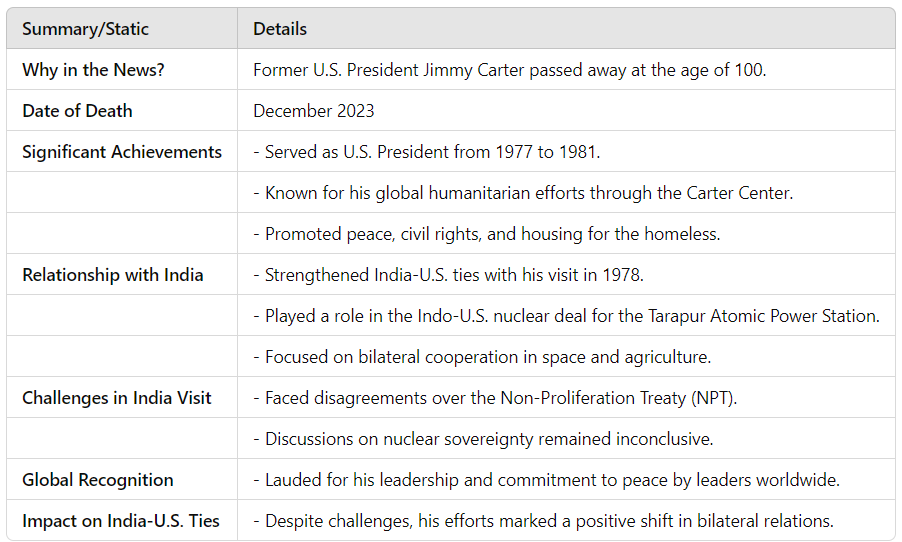
|
||||||||||||||||||||
| Reports And Indices | ||||||||||||||||||||
|
|
||||||||||||||||||||
|
Why in News?
A report by the Association for Democratic Reforms (ADR) revealed the net worth and liabilities of Indian Chief Ministers, with Mamata Banerjee being identified as the poorest Chief Minister in the country with assets worth only ₹15.38 lakh. Key Highlights of the Report Chief Ministers with the Lowest Assets Mamata Banerjee (West Bengal): Total Assets: ₹15,38,029 Movable Assets: More than ₹15 lakh Immovable Assets: Zero Self-Income (2024): ₹15,47,845 Profession: Social Work and Politics Omar Abdullah (Jammu & Kashmir): Total Assets: ₹55,24,430 Movable Assets: More than ₹55 lakh Immovable Assets: Zero Self-Income (2024): ₹14,52,010 Profession: Politician Pinarayi Vijayan (Kerala): Total Assets: ₹1.18 crore Movable Assets: ₹31,80,766 Immovable Assets: ₹86,95,000 Self-Income (2024): ₹2,87,860 Profession: Politician Chief Ministers with the Most Liabilities Pema Khandu (Arunachal Pradesh): Total Assets: More than ₹332 crore Liabilities: Not disclosed Self-Income (2024): Zero Siddaramaiah (Karnataka): Total Assets: More than ₹51 crore Liabilities: More than ₹23 crore Self-Income (2024): ₹20 lakh Chandrababu Naidu (Andhra Pradesh): Total Assets: More than ₹931 crore (Richest CM) Liabilities: More than ₹10 crore Self-Income (2024): ₹18 lakh Additional Insights Source of the Report: Based on analysis of candidate affidavits and nomination papers submitted to the Election Commission of India (ECI). Includes details of income, profession, assets, and liabilities. Richest Chief Minister: Chandrababu Naidu is the richest Chief Minister with assets worth over ₹931 crore. Most Liabilities: Pema Khandu has declared the highest liabilities among CMs. Key Terms Movable Assets: Assets like cash, bank deposits, vehicles, and jewelry. Immovable Assets: Assets like land, buildings, and properties. Self-Income: The declared income of an individual from various sources, such as salary, rent, or business. Significance of the Report Highlights the economic diversity among Indian Chief Ministers, from low net-worth leaders to billionaire politicians. Brings transparency into the wealth and liabilities of public representatives, fostering accountability. Offers insight into the financial status and declarations of Indian political leaders, aligning with public interest. Way Forward Strengthen Transparency: Ensure detailed and audited declarations of assets and liabilities. Public Accountability: Enforce stricter checks on discrepancies in income and asset declarations. Promote Equity in Politics: Address disparities in financial resources among leaders to ensure level playing fields. This report underlines the economic spectrum among Indian political leaders and the need for transparency and accountability in public life. |
||||||||||||||||||||
|
|
||||||||||||||||||||

|
||||||||||||||||||||
|
<< 30-Dec-24
|
||||||||||||||||||||
|
|
